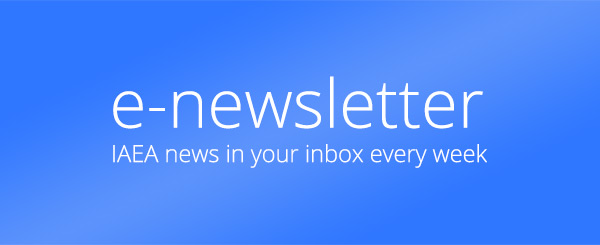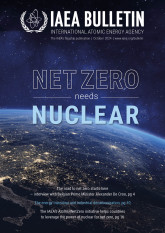Atoms4NetZero assesses the potential of nuclear to develop credible scenarios for achieving that goal by using IAEA analytical tools such as the Model for Energy Supply Strategy Alternatives and their General Environmental Impacts (MESSAGE), which combines technologies and fuels to construct ‘energy chains’, making it possible to map energy flows from supply (resource extraction) to demand (energy services). Other modelling tools used include the Model for Analysis of Energy Demand, which identifies structural changes needed to achieve net zero, and the Framework for the Modelling of Energy Systems, which assesses and quantifies the role and value of clean energy technologies, including nuclear, in the planning and operation of energy systems.
In its approach to energy scenario modelling, Atoms4NetZero marks a significant departure from current global practices. “Until now, nuclear energy has had a rather limited role in energy scenario studies used by governments and investors to chart the transition to net zero,” said Carolynn Scherer, Head of the IAEA’s International Project on Innovative Nuclear Reactors and Fuel Cycles Section. “This initiative aims to fill that gap by providing a fuller picture of the potential of nuclear energy, which has a proven track record in mitigating the causes of climate change while providing resilience to its consequences, and in enhancing energy security and sustainable development”.
Of course, variable renewable sources such as wind and solar are set to play a central role in the transition to clean energy systems. Here, too, Atoms4NetZero energy modelling can provide a key service, helping policy makers to optimize the integration of renewables into the energy mix through the assessment of resource availability and evaluation of the impact on grid stability. “By combining nuclear power with renewables, countries can achieve a more secure, resilient and sustainable energy system,” says Paillere.
“Energy modelling scenarios considered within the framework of Atoms4NetZero are important because, in Africa especially, we are facing a serious energy deficit situation, and our policy makers are looking at different options,” said Enobot Agboraw, Executive Secretary of the African Commission on Nuclear Energy. “They’re looking at nuclear power; they’re looking at renewables, and it is very important that they are properly informed in order to be able to make the best possible decisions. Energy modelling provides scientifically based evidence so that they can make decisions that are not based on hearsay or emotion, but solid decisions that would enable us to address this issue of climate change and energy deficit”.
Atoms4NetZero builds on the IAEA’s well established work with countries on technology neutral energy planning, an approach that impartially evaluates and selects energy sources based on their performance. Through its technical cooperation programme, the IAEA supports countries’ energy planning efforts using modelling tools such as MESSAGE and System Planning Test models. Since 2021, the IAEA has worked with the International Renewable Energy Agency to assist the African Union in developing an energy infrastructure development strategy known as the Continental Power System Masterplan. This will enable Africa to compare different energy scenarios and pool resources for investment in sustainable energy sources in order to solve the continent’s growing energy challenges.
Atoms4NetZero will also conduct techno-economic analyses and studies — such as a comparative analysis of low carbon energy sources for a country or region —, possibly in collaboration with stakeholders such as countries, end users, research organizations, industry, financial institutions and other international organizations and agencies. The initiative encompasses other areas of activity to assist countries in their clean energy transition. These include an advisory service, workshops and training for capacity building, outreach and stakeholder engagement.
Atoms4NetZero is currently working with Estonian researchers to incorporate strict carbon constraints into the country’s MESSAGE model for net zero scenarios for electricity and heat production to 2050. Estonia, which obtains the bulk of its electricity generation from fossil fuels, is considering the introduction of nuclear power and of small modular reactors in particular.







